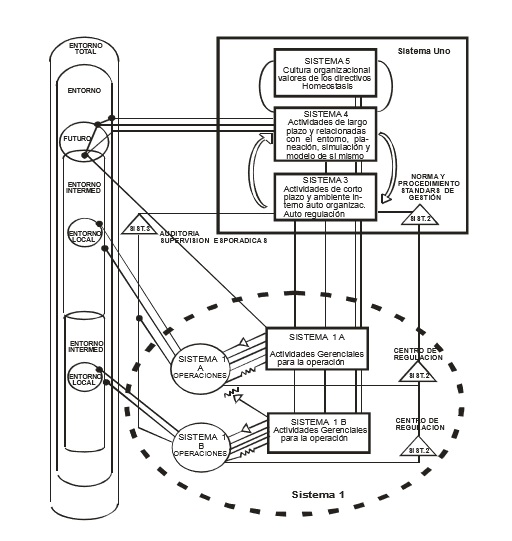Estudio de la exitosa gestión de una institución de formación profesional peruana desde el enfoque de sistemas de Stafford Beer
DOI:
https://doi.org/10.33017/RevECIPeru2011.0043/Keywords:
cybernetics, complexity, environment, viable system model, training.Abstract
The viable system model - VSM proposed by Stafford Beer, allows the study of organizations from an approach that favours’ autonomy, self-control, information flow, monitoring, standardization, among other important aspects of management an organization, allowing you to identify if the system is viable. The study was conducted at a prestigious training institution Peruvian national coverage, with fourteen area offices and over forty professional training centres’ throughout Peru, dedicated to technical education at the level of operator or operators and technicians middle management, training and continuous training in companies for the industrial sector, including the identification of components, their key relationships and successful results that shows the management of this organization. The main results of this institution are: It is the first of its kind that has achieved ISO 9001 certifications for quality management, ISO 14001, environmental management and OHSAS 18001 for safety management and occupational health ; The employability of graduates is very high, 69% of this working in the specialty study and 9% in an occupation related to their specialty, and is considered among the 20 most successful programs of job training in the world , according to study by the U.S. Agency for International Development - USAID. With the MSV model of Stafford Beer companies are studied under this approach in the seventies and eighties of last century, as Cybersyn Project in Chile, and now with the technological development of ICTs and Industrial Automation, has been relaunched by scholars of the systems approach and organizational cybernetics, restarting activities researchers identified this model as the pilot project for the Russian national innovation system (NIS) of the Institute of Physics and Technology in Moscow since 2004. The MSV model approach in SENATI, shows its usefulness for identifying components and their relationships between themselves and the environment, and determine if the system is viable, which can interpolate from the results, which in the case of SENATI are demonstrates the successful management The model promotes the study of complex problems such as managing large organizations, in which autonomy, quality of decision making, monitoring and standardization may be decisive for the survival, growth and development, and so applying the systems approach viable, based on the principles of cybernetics, you can have a successful administration, becoming an institution of excellence, even if the application of these principles has not been previously identified as such, or perhaps, known by another name, which may be the case SENATI.


